JNR 205 series
Fujikyu 6000 series
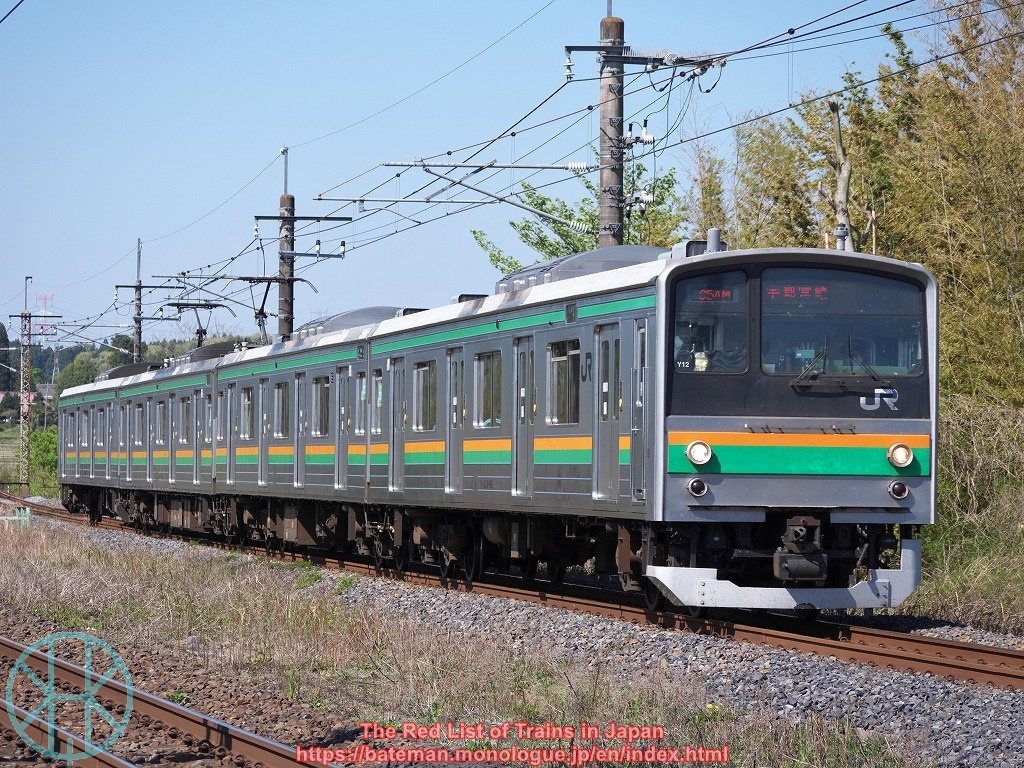
Data (as of 29 Nov 2025)
| Status: | Critically Endangered |
| (JR East) | |
| Least Concern | |
| (JR West, Fujikyu) | |
| Constructed in: | 1985-94 |
| Number built: | 1,461 |
| Registered: | 109 |
History
The 205 series is a commuter EMU type developed by Japanese National Railways. The body is made of stainless-steel unlike the predecessors (e.g. 103 series). The traction was initially developed for suburban trains rather than commuter trains so that it did not necessarily work well on some commuter rails with too many stations.
The 205 series trains were introduced to Yamanote Line and other various commuter lines in the capital including Keihin-Tohoku, Saikyo and Sobu & Chuo (Local) Lines. In 1990, JR East developed carriages with six doors on each side to ease severe congestion. Some of those on Keiyo and Musashino Lines had white front ends, which enthusiasts called "Märchen". Those introduced to Sagami Line had very different design as shown further below.
Those on Yamanote Line were reallocated in the 2000s to many other lines in Greater Tokyo Area such as Hachiko, Keiyo and Musashino Lines. In addition, a few were converted, shortened and transferred to northern Kanto region (Tochigi Prefecture). However, all of them dramatically declined in the 2010s as JR East replaced them with E233 series or E131 series. Some of them were resold to Fujikyu Railway in 2012 and renamed 6000 series.
The 205 series trains were also introduced to Osaka area. Those built before the privatisation of JNR were for Tokaido Main and San-yo Main Lines, while those after the privatisation were for Hanwa Line. JR West refurbished and now uses them on Nara Line.
Current Operations & Future Prospects
JR East has a few units and they are allocated to Senseki and Nambu (branch) Lines. The one for Nambu Line is a spare unit that runs occasionally. Senseki Line trains will be replaced with refurbished-E131 series by early-2026.
JR West uses them for stopping services on Nara Line, and there is no plan of withdrawal at present.
Fujikyu Railway uses the 6000 series on the entire line, mostly for stopping services.
Photos

There are subtle differences between those introduced by JNR (left) and JR West (right). Both are now used on Nara Line.
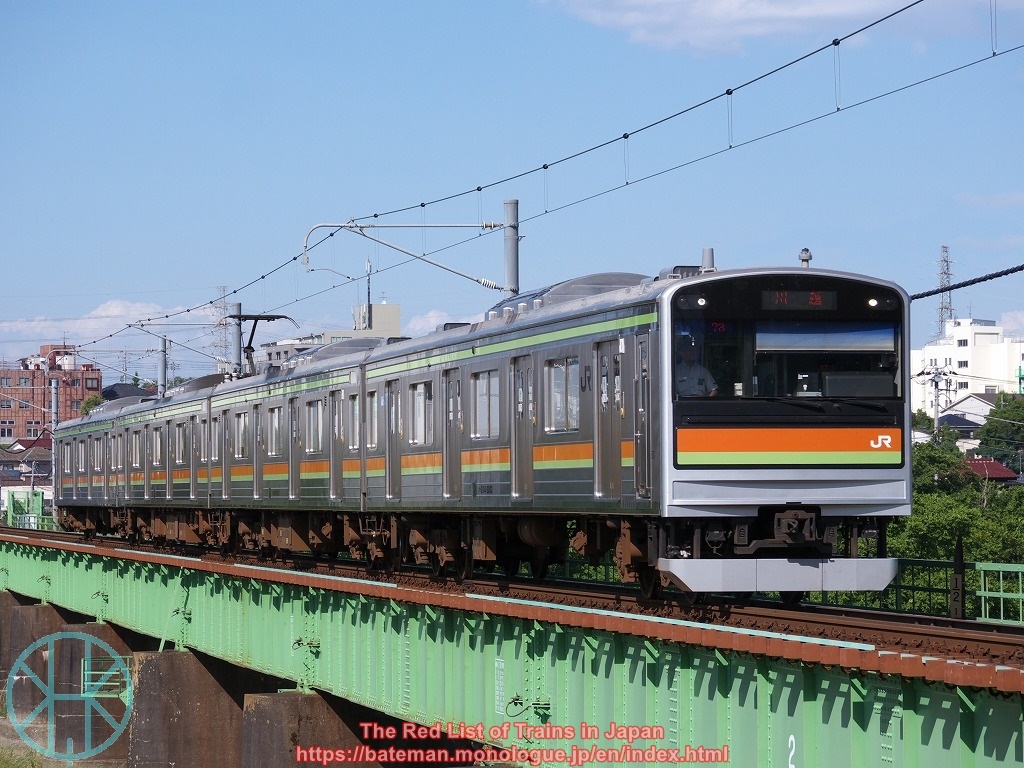
JR East has some odd-looking units, which were converted from intermediate carriages. They are now used on Senseki, Nambu branch and Tsurumi Lines.
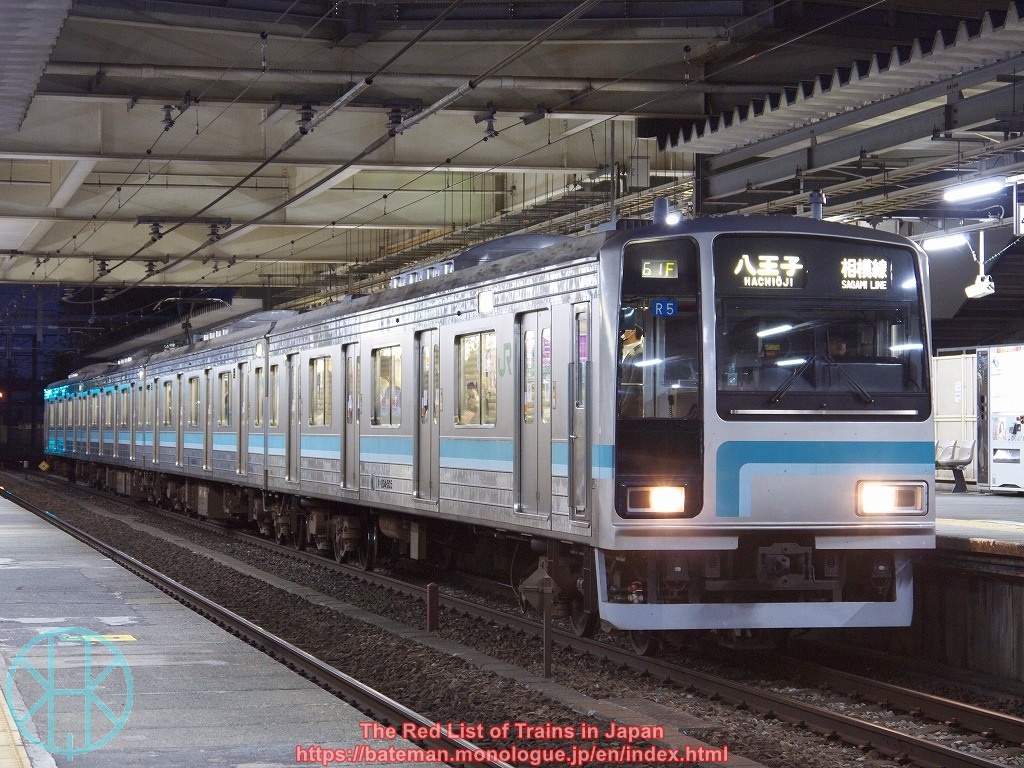
Sagami Line units looked completely different, and they were unique to Sagami and Yokohama Lines.
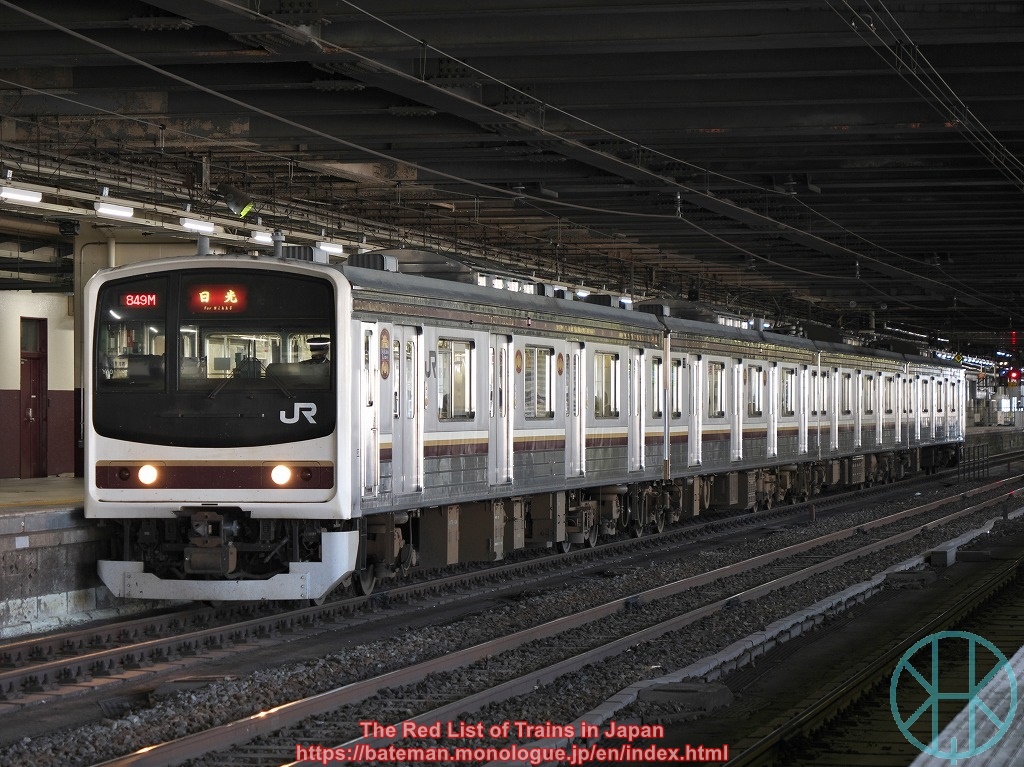
Those introduced in 1990-91 by JR East have completely different front end ("Märchen"). A few units were later reallocated to Nikko and Utsunomiya Lines.

They were initially introduced to Keiyo and Musashino Lines when Keiyo Line construction was completed in 1990.

Those on Musashino Line were mostly reallocated from Yamanote Line. Their traction was replaced with new inverters, and they were in service until 2020.

Saikyo and Kawagoe Lines' trains were common in the middle of Tokyo, but they were often regarded as a source of tremendous noise.
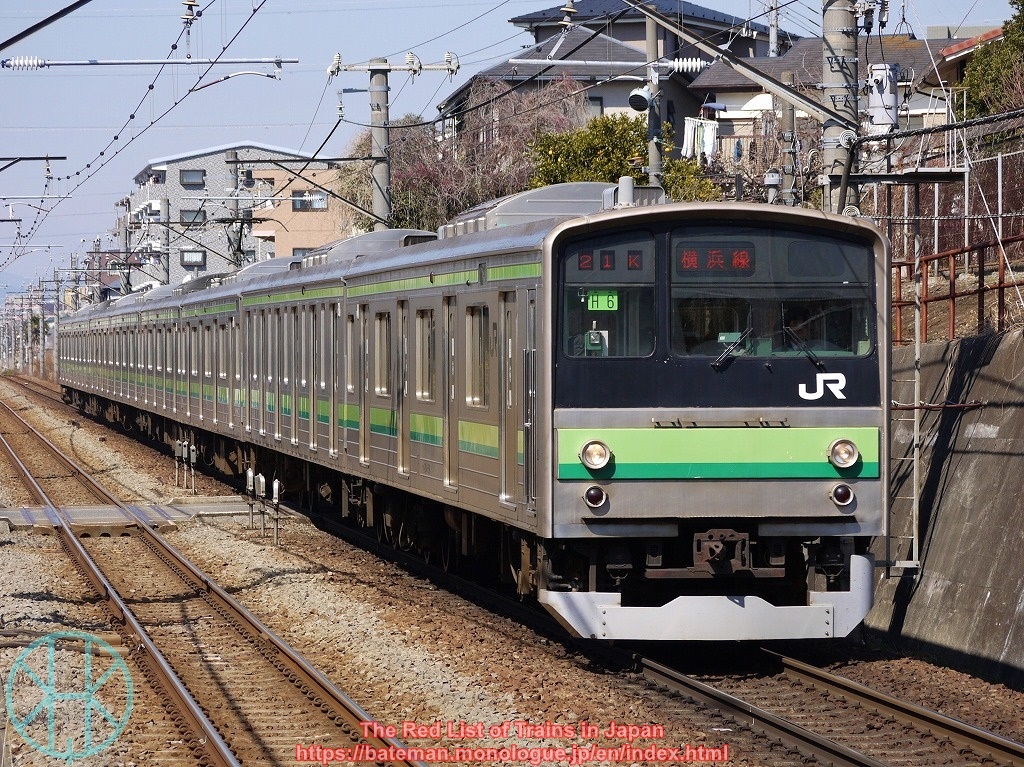
Yokohama Line units were often said to be identical to Yamanote Line livery unless there were dark green bands.
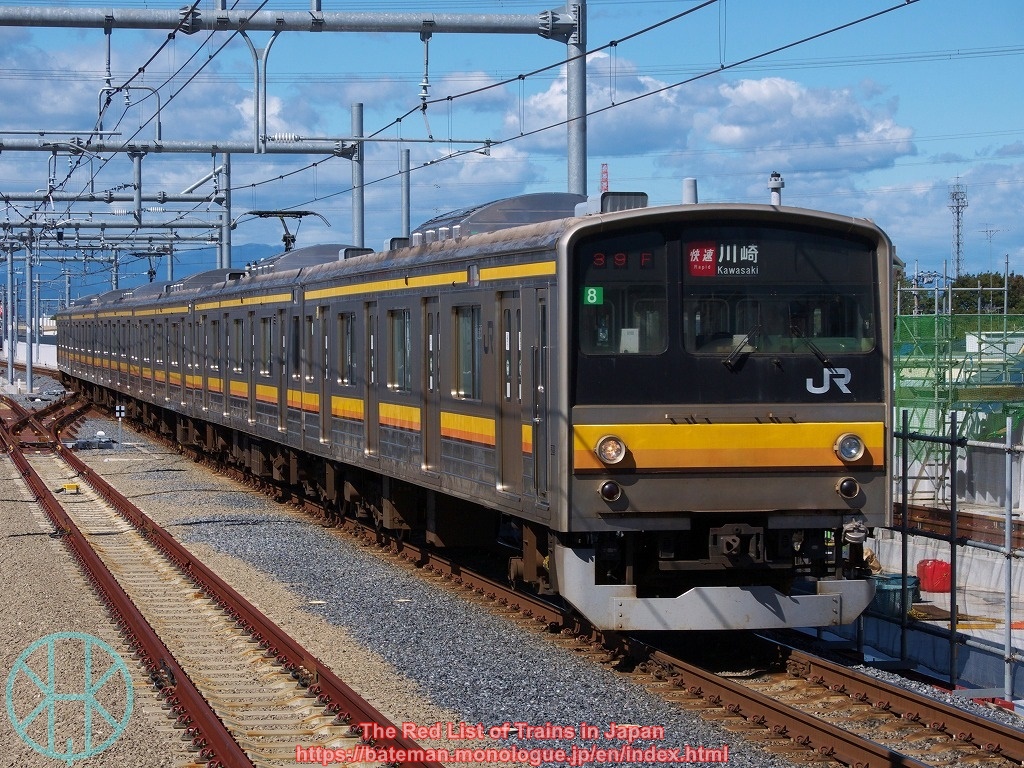
Nambu Line units were mostly from Yamanote Line as well.

Prototype units of the 205 series looked slightly different from others, such as windows between doors. They were initially introduced to Yamanote Line, and later reallocated to Keiyo Line.
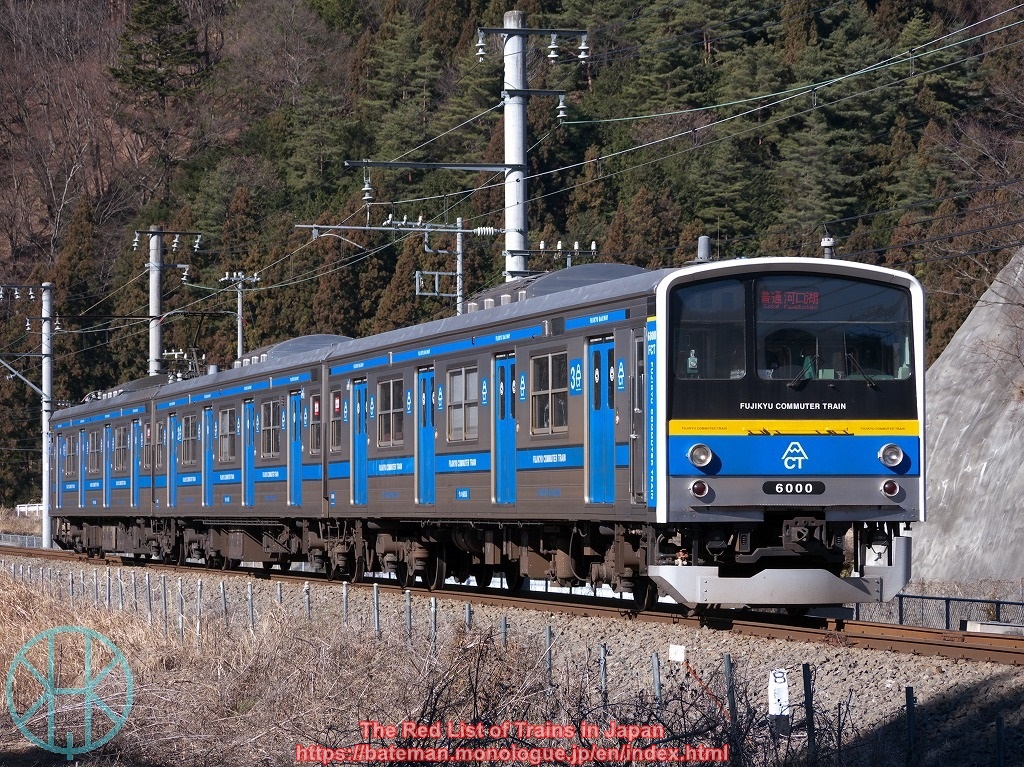
Fujikyu 6000 series, former 205 series prototype on Keiyo Line.
(Updated: 29 Nov 2025)
